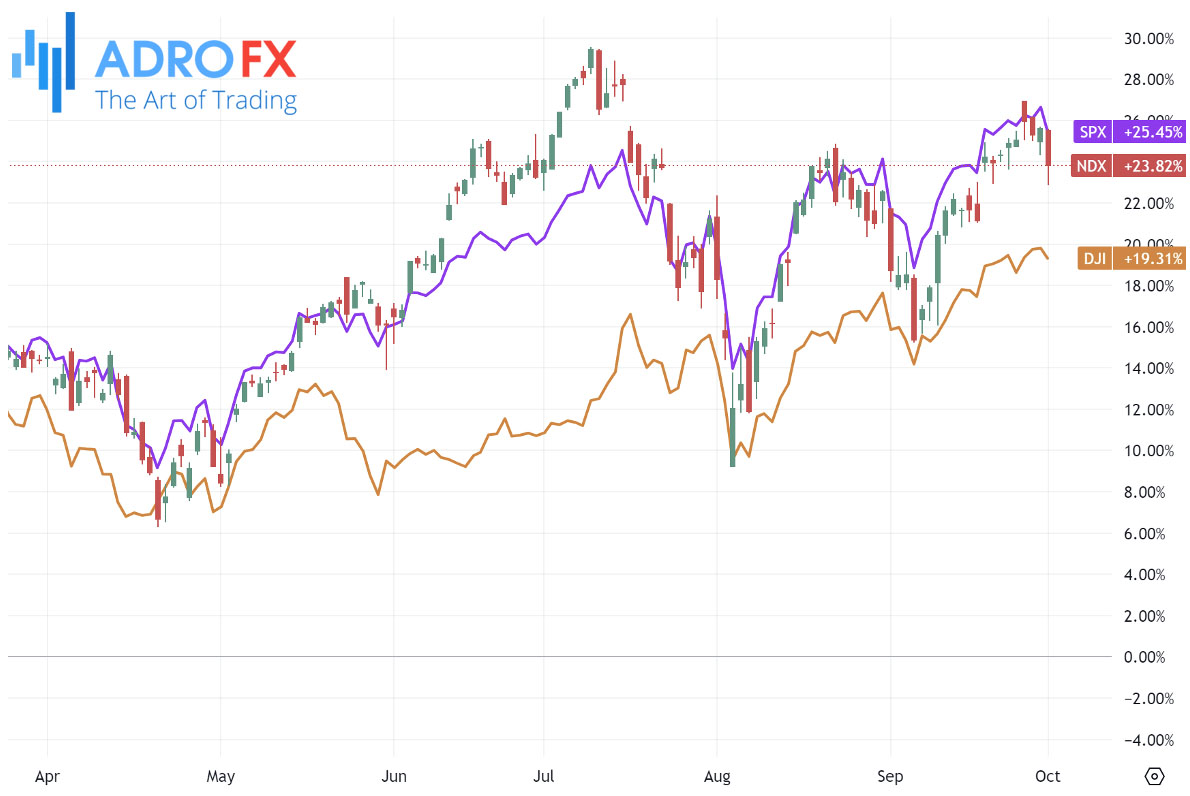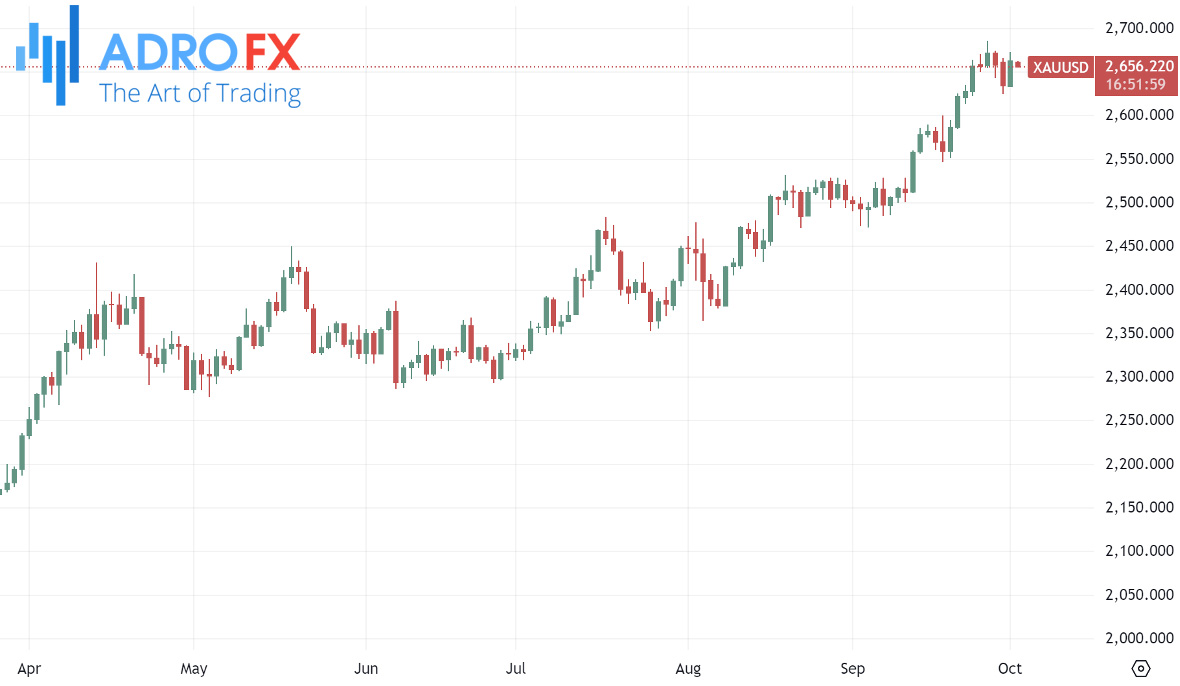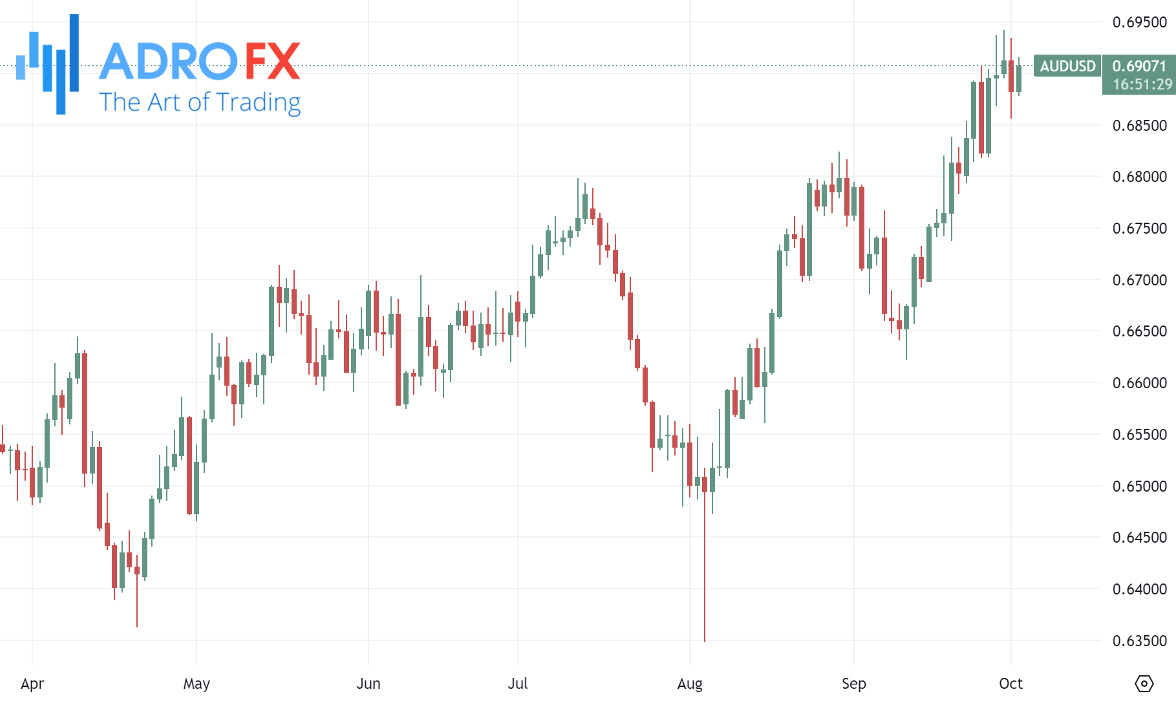Market Sell-Off Deepens as Middle East Tensions Escalate, Gold Surges Amid Uncertainty | Daily Market Analysis

Key events:
- USA - ADP Nonfarm Employment Change (Sep)
- USA - Crude Oil Inventories
The S&P 500 declined on Tuesday as investors moved away from riskier assets due to escalating concerns over a broader Middle East conflict, following Iran's launch of multiple missiles targeting Israel.
The Dow Jones Industrial Average dropped 173 points, or 0.4%, while the S&P 500 fell 1% and the NASDAQ Composite slid 1.5%.
Despite these declines, all three major indices posted gains for both September and the third quarter. Notably, the S&P 500 achieved its first positive September since 2019 and has surged more than 20% year-to-date, marking a milestone not seen since 1997.

Gold prices rallied by over 1% on Tuesday as tensions in the Middle East heightened safe-haven demand. Following Israel's strike on Hezbollah, Iran retaliated by launching nearly 200 missiles, pushing gold to $2,662, rebounding from a daily low of $2,632. Gold prices reached a weekly high of $2,673, but if geopolitical tensions ease, a close below the September 30 high of $2,665 could lead to a pullback. Continued strength in the US Dollar, supported by resilient labor market data, capped further gains in gold.

Risk aversion has taken center stage, with investor sentiment shifting from optimism over strong US jobs data to concerns about potential geopolitical instability. Reports indicated Iran fired between 240-250 missiles at Israel, while Israel vowed to continue targeting sites in Lebanon. US National Security Advisor Jake Sullivan warned of "severe consequences" for the attack.
In other markets, the Australian Dollar pared some losses against the US Dollar on Wednesday, supported by the Reserve Bank of Australia’s hawkish stance on interest rates and stimulus measures from China, Australia’s key trading partner. Australia’s AiG Industry Index improved slightly in September, rising to -18.6 from -23.5, though it still signals contraction for the 29th consecutive month. Meanwhile, the AiG Manufacturing PMI fell to -33.6, its lowest reading on record. Geopolitical tensions may limit the upside potential for the AUD/USD pair as market caution favors the US Dollar.

The Japanese Yen weakened against the US Dollar as doubts surfaced over further rate hikes from the Bank of Japan. The BoJ's September meeting minutes revealed no immediate plans for additional hikes, signaling the central bank's accommodative stance. Incoming Prime Minister Shigeru Ishiba reiterated the need for low borrowing costs to support Japan's economic recovery, adding pressure to the JPY.

Weaker-than-expected US manufacturing data, as indicated by the ISM Manufacturing PMI, slightly pressured the US Dollar. Traders are now focused on the upcoming US ADP Employment Change and further remarks from the Federal Reserve.
Meanwhile, the New Zealand Dollar trades near 0.6285, despite a stronger US Dollar. Rising geopolitical tensions could boost the Greenback, but weaker US data may limit its gains. The ISM Manufacturing PMI for September held steady at 47.2, missing estimates and remaining below the 50% threshold for the sixth consecutive month.

HSBC analysts expect more aggressive rate cuts from the Reserve Bank of New Zealand in the coming months due to a slowing economy. The bank now anticipates 50-basis point cuts in both October and November, up from its previous forecast of 25-basis point reductions. This outlook could limit the Kiwi's upside in the near term.
Market participants are now awaiting the US ADP report, which is projected to show that private-sector employers added 120K jobs in September, up from the previous 99K. However, the primary focus will be on the closely-watched Nonfarm Payrolls (NFP) report, as it is expected to offer clearer insights and set the tone for market direction.









